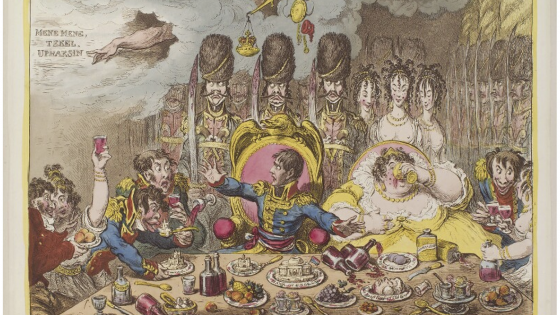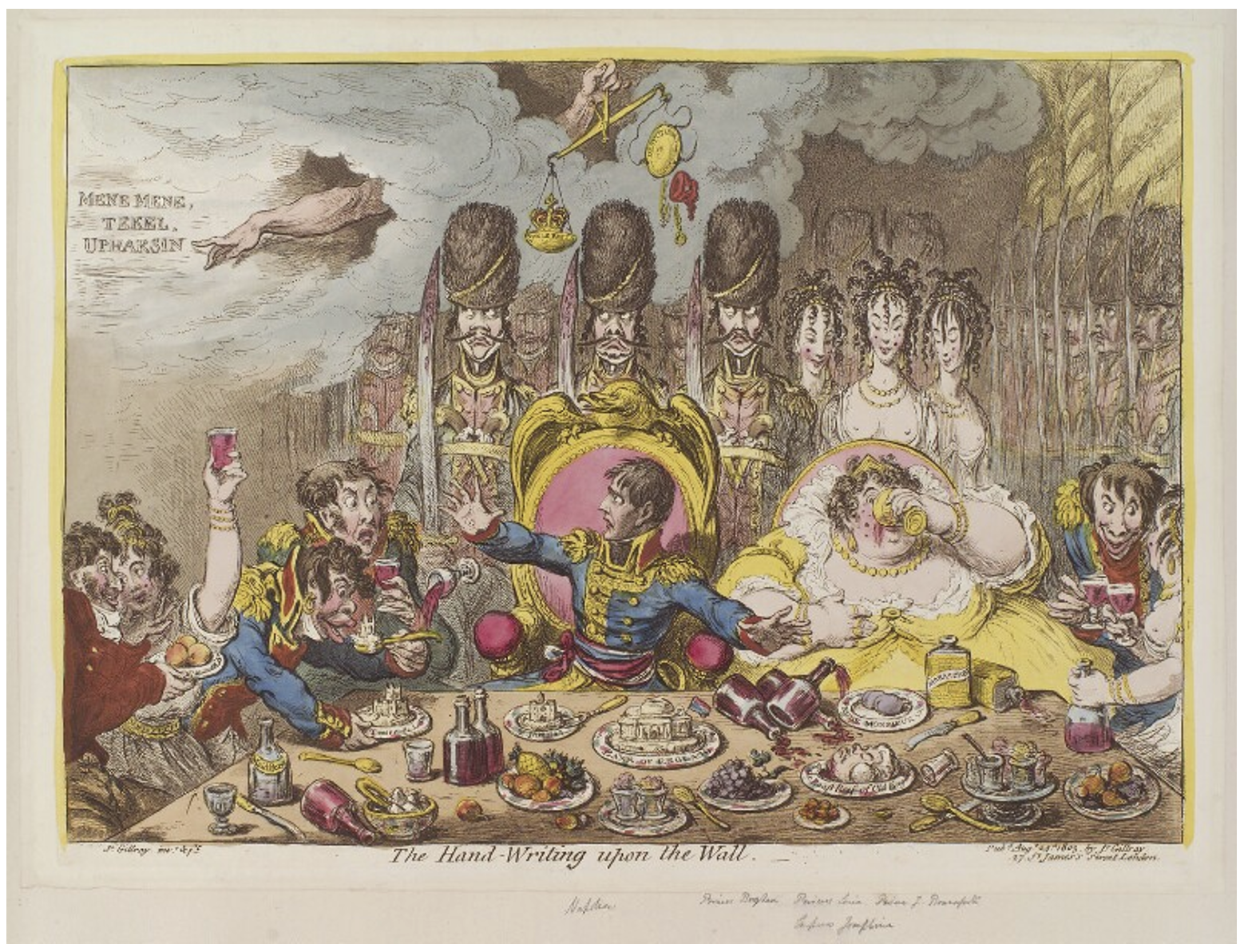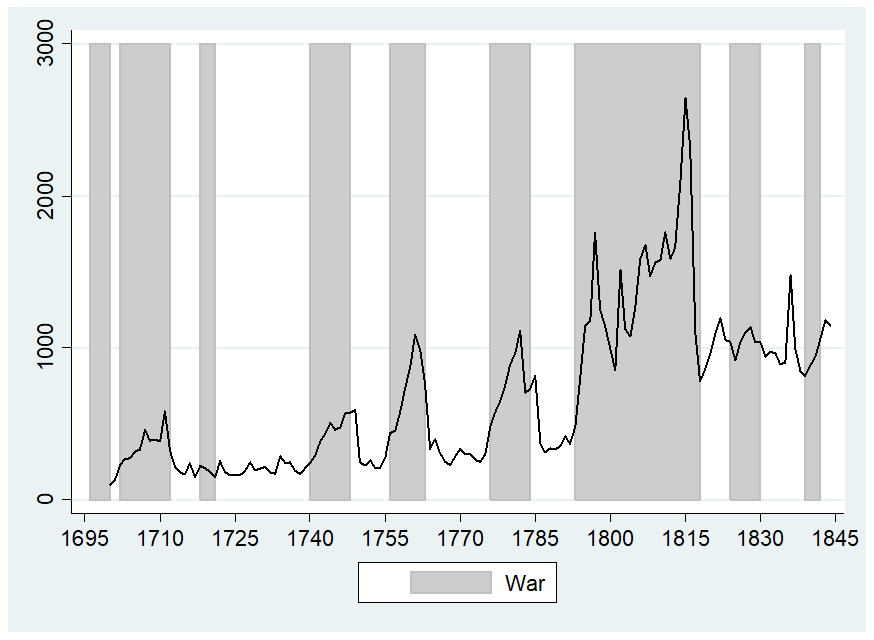The war in Ukraine has called attention to the destructive power that sanctions applied to Russia are having and will continue to have on Russia’s economy. Among the sanctions is the policy of freezing the Russian central bank’s overseas assets worth around $600 billion. Preventing the central bank from deploying its international reserves, making it impossible for it to liquidate its assets, is part of an economic war designed to undermine Russia’s economy and war effort. The French finance minister said that “[w]e are waging total economic and financial war against Russia, Putin, and his government” (Wigglesworth et al. 2022).
Special wartime monetary policies have often been successfully used before in history. They suggest that monetary matters can have stronger and much longer-term consequences beyond the types of effects and horizons that macroeconomists typically consider or believe to be possible. One suggestive example is the case of the Bank of England’s support to the British economy during the French Wars of 1793-1815. Adam Smith (2003/1776) had already written in The Wealth of Nations that “The stability of the Bank of England is equal to that of the British government … [The Bank of England] acts, not only as an ordinary bank, but as a great engine of state,” and the semi-public character of the Bank’s actions emphasised by Kynaston (2017: 44). In recent work, we argue that the Bank’s support to the war effort likely decisively influenced the course of history (O’Brien and Palma 2016, 2020a, 2020b). We elaborate upon the evolution of the institutional framework without which the money market could not have supported the British government's systematic naval and military successes over the 18th century. The culmination of these efforts was victory in the most protracted and costly conflict of all, the Revolutionary and Napoleonic wars, which witnessed a new and more radical form of monetary policy.
From its foundation as a private corporation in 1694, the Bank of England extended large amounts of credit to support the British private economy and to support an increasingly centralised British state. It was playing a public role and in many ways acting like a central bank well before Bagehot's doctrine came on stream. The Bank helped the British state reach a position of geopolitical and economic hegemony in the international economic order. It contributed to form an effective and efficient fiscal-naval state and promoted the development of a system of financial intermediation for the economy. This symbiotic relationship became stronger after 1793, with the start of the French Wars which would last until Waterloo in 1815.
Napoleon, who also tried to impose a continental blockade on British commerce, obsessed with how the Bank of England was helping Britain during the Napoleonic wars. According to several accounts, “Napoleon boasted in June [1803] that he needed only three days of fog to be master of London, of Parliament, of the Bank of England.” The British were, in turn, aware of this. An 1803 print by James Gillray shows Napoleon feasting with his officers at a table where models of buildings representing various British institutions are depicted (Figure 1). The state is represented by the Tower of London and St. James’s Palace. On the head of a bishop, a label reads “Roast Beef of Old England”. Conspicuously, and at the centre of the image, stands an oversized Bank of England.
Figure 1 “The Hand-Writing upon the Wall”, by James Gillray
Source: Published by James Gillray on 24 August 1803. Hand-coloured etching and aquatint; 253 x 345 mm. British Museum Satires 10072. Notice the Bank of England at the centre of the table.
In Britain, high levels of fiscal capacity, together with liquid but low-inflation government financing provided by the Bank of England and its reputable management of short- and long-term debt, supported a rapid increase in military expenditure in times of warfare. This, in turn, through a ‘ratchet effect’, supported a persistent expansion of the size of the state which was beneficial to the war effort. After each war was over, the real size of military and government was reduced, but to a level only slightly higher than before the war had started. But following the important French Wars of 1793-1815, high and increasing levels of expenditure became permanently higher (Figure 2). Rising fiscal and military capacity could be seen through growing naval power, measured, for instance, by the increasing number of warships available relative to other countries, especially the powerful ships of the line (Rodger 2006).
High state capacity promoted not only a stable domestic economy plus returns from the empire, but also frequent successes in military interventions in Continental Europe which served British interests. These could be either direct military interventions or, more often, subsidies to British allies by taking advantage of reputable bills of exchange. This was, for instance, how Britain subsidised Prussia during the Seven Years’ War. During the Napoleonic wars, subsidies were sometimes paid to allies in bullion, which was in turn made available by the large-scale substitution of domestic currency with Bank of England notes, many of which were issued in low denominations. The Bank’s successful suspension of its commitment to redeem its notes in bullion spawned a fiat money system which transformed debt into money (O’Brien and Palma 2020a).
Figure 2 Government expenditures (public administration and defence) and war, 1700-1844
Real index, 1700=100
Source: Broadberry et al. (2015). See O’Brien and Palma (2020b) for details.
The Bank supplied the government with flows of liquidity required to wage war. It supported the formation of the state and the building of fiscal capacity by providing the short-term liquidity necessary to deal with military crises. Without the Bank, these crises would have compromised Britain’s capacity to wage war, which in turn would have diminished long-term economic progress. By fostering the development of a more monetised economy, the Bank also made it easier for the state to collect taxes. Indirectly, it also encouraged overall financial intermediation for the private economy and contributed to the progressive emergence of an investment-friendly environment. But it never became a systematic source of funds for the government in a way which would have vitiated price stability in the long run. The symbiotic relationship between the Bank of England and the British state was an advantage to the emergence of the Industrial Revolution.
Today’s global economy is much more integrated than was the case two centuries ago. Economic sanctions can hence deal even more damage in comparative terms. In particular, today’s sanctions on the Bank of Russia are damaging the operational capacity of this key institution for the Russian economy, and their consequences will likely be greater than many expect. In one way or another, they are likely to lead to long-term changes in Russia’s economy and possibly political system as well.
References
Broadberry, S, B Campbell, A Klein, M Overton and B Leeuwen (2010), British economic growth: 1270-1870, Cambridge University Press.
Kynaston, D (2017), Till time's last sand: A history of the Bank of England 1694-2013, Bloomsbury Publishing.
O'Brien, P and N Palma (2016), “Unconventional monetary policy in the past: Lessons for today”, VoxEU.org, 3 September.
O'Brien, P and N Palma (2020a), “Danger to the old lady of Threadneedle street? the bank restriction act and the regime shift to paper money, 1797-1821”, European Review of Economic History 24(2): 390-426.
O'Brien, P and N Palma (2020b), “Not an ordinary bank but a great engine of state: the bank of England and the British economy, 1694-1844”, CEPR Discussion Paper 15400.
Rodger, N A (2006), The command of the ocean: a naval history of Britain 1649-1815, Penguin UK.
Smith, A (2003/1776), The wealth of nations, Bantam Dell.
Wigglesworth, R, C Smith and C Jones (2022), “The west’s hybrid war on Russia”, Financial Times, 4 March.





